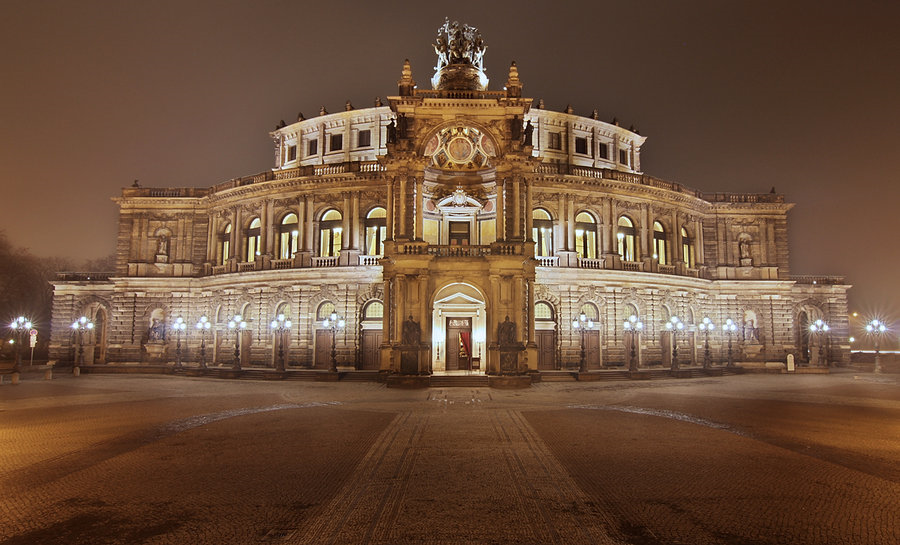Semperoper

The first opera house at the location of today's Semperoper was built by the architect Gottfried Semper in 1841. Its opening was on April 13, 1841 with an opera by Carl Maria von Weber. The building style itself is debated among many, as it has features that appear in three styles; Early Renaissance and Baroque, with Corinthian style pillars typical of Greek (classical revival). Perhaps the most suitable label for this style would be eclecticism, where influences from many styles are used, a practice most common during this period. Nevertheless, the opera building, Semper's first, is regarded as one of the most beautiful European opera houses.
Following a devastating fire in 1869, the citizens of Dresden immediately set about rebuilding their opera house. They demanded that Gottfried Semper do the reconstruction, even though he was then in exile because of his involvement in the May 1849 uprising in Dresden. The architect had his son, Manfred Semper, build the second opera house using his plans. Completed in 1878, it was built in Neo-Renaissance style. During the construction period, performances were held at the Gewerbehaussaal, which opened in 1870.
The building is considered to be a prime example of "Dresden Baroque" architecture. It is situated on the Theater Square in central Dresden on the bank of the Elbe River. On top of the portal there is a Panther quadriga with a statue of Dionysus. The interior was created by architects of the time, such as Johannes Schilling. Monuments on the portal depict artists, such as Johann Wolfgang von Goethe, Friedrich Schiller, William Shakespeare, Sophocles, Molière and Euripides. The building also features work by Ernst Rietschel and Ernst Julius Hähnel.
In the pre-war years, the Semperoper premiered many of the works of Richard Strauss.
In 1945, during the last months of World War II, the building was destroyed again, this time by the bombing of Dresden and the subsequent firestorm. Exactly 40 years later, on February 13, 1985, the opera's reconstruction was completed. It was rebuilt to be almost identical to its appearance before the war. The Semperoper reopened with the opera that was performed just before the building's destruction in 1945, Carl Maria von Weber's "Der Freischütz".
When the Elbe flooded in 2002, the building suffered heavy water damage. With substantial help from around the world, it reopened in December that year.